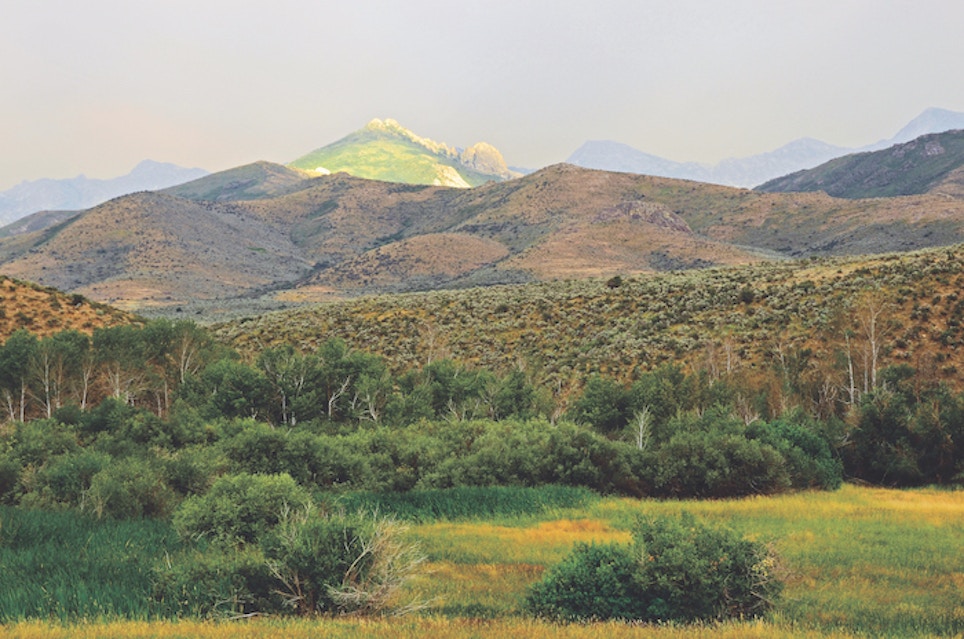Covered in jagged peaks and aspen-lined basins that plunge into steep canyons of sage and pinyon, Nevada’s Ruby Mountains have a lot for elk to love. Yet wapiti had to find their own way back to this nirvana after being killed off during the late 1800s. In fact, it wasn’t until 1997 that a small herd pioneered its way 25 miles across the desert from the neighboring Spruce Mountains. Egged on by great habitat, though, elk numbers grew quickly in their new home, and some 400 roam the Rubies today.
Come winter, the herds take refuge from heavy snows in the valleys below. One key exit is Gennette Creek, which unites with Smith Creek smack in the middle of 2,151 acres owned by a ranching family who recently worked with Rocky Mountain Elk Foundation (RMEF) to complete a purchased conservation easement. Elk find all they need on this parcel to survive the long winter among rich cottonwood stands, wet meadows, grasslands and sagebrush.
Its protection is a great win for elk, and perhaps even a larger one for pronghorn and the state’s largest mule deer herd — and more the multitude of canine and feline predators that reside there. Gennette Creek forms the pinch-point in the hourglass between almost 300,000 acres of national forest to the north and 70,000 acres of Bureau of Land Management land to the south. Nevada Department of Wildlife identified this area as the state’s most vital and vulnerable big game migration corridor. And that’s not all.
Smith Creek flows for more than a mile through the easement and has the rare distinction of hosting federally threatened Lahontan cutthroat trout, which can grow to
40 pounds in Pyramid Lake, though the creek-dwelling natives are considerably more diminutive. They persist in just 179 miles of Nevada’s streams. Greater sage grouse also breed on the property, and this area boasts the state’s highest density of leks (breeding grounds).
In fact, this easement holds such exceptional habitat that the National Fish and Wildlife Foundation, Nevada Department of Wildlife and U.S. Navy’s Readiness and Environmental Protection Integration program joined forces with RMEF to help fund protection of this this linchpin for wildlife.






